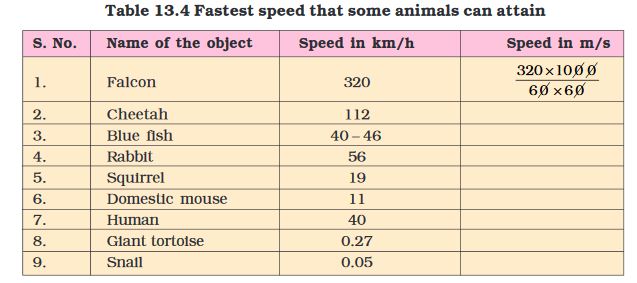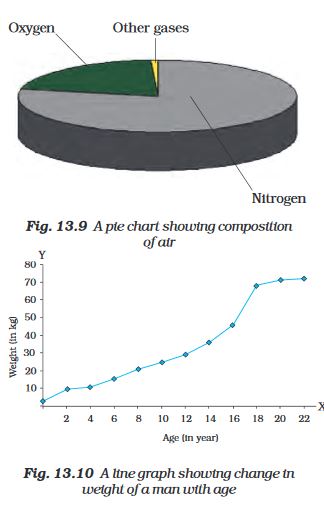Table of Contents

13. Motion and Time
In Class VI, you learnt about different types of motions. You learnt that a motion could be along a straight line, it could be circular or periodic. Can you recall these three types of motions? Table 13.1 gives some common examples of motions. Identify the type of motion in each case.

13.1 Slow or Fast
We know that some vehicles move faster than others. Even the same vehicle may move faster or slower at different times. Make a list of ten objects moving along a straight path. Group the motion of these objects as slow and fast. How did you decide which object is moving slow and which one is moving fast?
If vehicles are moving on a road in the same direction, we can easily tell which one of them is moving faster than the other. Let us look at the motion of vehicles moving on a road.
Activity 13.1
Look at Fig. 13.1. It shows the position of some vehicles moving on a road in the same direction at some instant of time. Now look at Fig. 13.2. It shows the position of the same vehicles after some time. From your observation of the two figures, answer the following questions:
Which vehicle is moving the fastest of all? Which one of them is moving the slowest of all?
The distance moved by objects in a given interval of time can help us to decide which one is faster or slower. For example, imagine that you have gone to see off your friend at the bus stand. Suppose you start pedalling your bicycle at the same time as the bus begins to move. The distance covered by you after 5 minutes would be much smaller than that covered by the bus. Would you say that the bus is moving faster than the bicycle?
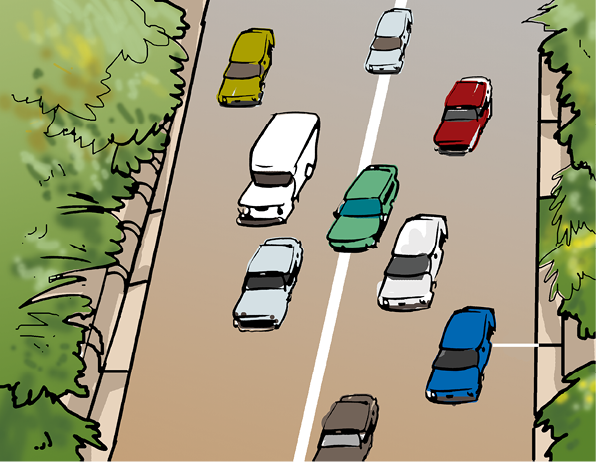
Fig. 13.1 Vehicles moving in the same direction on a road

Fig. 13.2 Position of vehicles shown in Fig. 13.1 after some time
We often say that the faster vehicle has a higher speed. In a 100-metre race it is easy to decide whose speed is the highest. One who takes shortest time to cover the distance of 100 metres has the highest speed.
13.2 Speed
You are probably familiar with the word speed. In the examples given above, a higher speed seems to indicate that a given distance has been covered in a shorter time, or a larger distance covered in a given time.
The most convenient way to find out which of the two or more objects is moving faster is to compare the distances moved by them in a unit time. Thus, if we know the distance covered by two buses in one hour, we can tell which one is faster. We call the distance covered by an object in a unit time as the speed of the object.
When we say that a car is moving with a speed of 50 kilometres per hour, it implies that it will cover a distance of 50 kilometres in one hour. However, a car seldom moves with a constant speed for one hour. In fact, it starts moving slowly and then picks up speed. So, when we say that the car has a speed of 50 kilometres per hour, we usually consider only the total distance covered by it in one hour. We do not bother whether the car has been moving with a constant speed or not during that hour. The speed calculated here is actually the average speed of the car. In this book we shall use the term speed for average speed. So, for us the speed is the total distance covered divided by the total time taken. Thus,

In everyday life we seldom find objectsmoving with a constant speed over longdistances or for long durations of time.If the speed of an object moving alonga straight line keeps changing, itsmotion is said to be non-uniform. On the other hand, an object moving alonga straight line with a constant speedis said to be in uniform motion. Inthis case, the average speed is thesame as the actual speed. |
13.3 Measurement of Time
If you did not have a clock, how would you decide what time of the day it is? Have you ever wondered how our elders could tell the approximate time of the day by just looking at shadows?
How do we measure time interval of a month? A year?
Our ancestors noticed that many events in nature repeat themselves after definite intervals of time. For example, they found that the sun rises everyday in the morning. The time between one sunrise and the next was called a day. Similarly, a month was measured from one new moon to the next. A year was fixed as the time taken by the earth to complete one revolution of the sun.
Often we need to measure intervals of time which are much shorter than a day. Clocks or watches are perhaps the most common time measuring devices. Have you ever wondered how clocks and watches measure time?
The working of clocks is rather complex. But all of them make use of some periodic motion. One of the most well-known periodic motions is that of a simple pendulum.
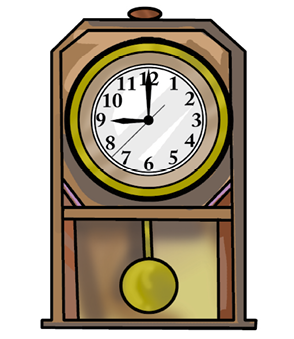
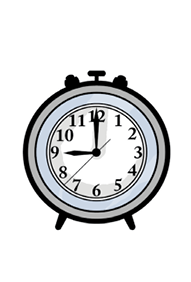
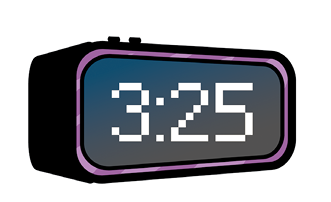
(c) Digital clock
Fig. 13.Fig. 13.

Fig. 13.4 (a) shows the pendulum at rest in its mean position. When the bob of the pendulum is released after taking it slightly to one side, it begins to move to and fro [Fig. 13.4 (b)]. The to and fro motion of a simple pendulum is an example of a periodic or an oscillatory motion.
The pendulum is said to have completed one oscillation when its bob, starting from its mean position O, moves to A, to B and back to O. The pendulum also completes one oscillation when its bob moves from one extreme position A to the other extreme position B and comes back to A. The time taken by the pendulum to complete one oscillation is called its time period.
Activity 13.2
Set up a simple pendulum as shown in Fig. 13.4 (a) with a thread or string of length nearly one metre. Switch off any fans nearby. Let the bob of the pendulum come to rest at its mean position. Mark the mean position of the bob on the floor below it or on the wall behind it.
To measure the time period of the pendulum we will need
a stopwatch. However, if a stopwatch is not available, a table clock or a wristwatch can be used.
To set the pendulum in motion, gently hold the bob and move it slightly to one side. Make sure that the string attached to the bob is taut while you displace it. Now release the bob from its displaced position. Remember that the bob is not to be pushed when it is released. Note the time on the clock when the bob is at its mean position. Instead of the mean position you may note the time when the bob is at one of its extreme positions. Measure the time the pendulum takes to complete 20 oscillations. Record your observations in Table 13.2. The first observation shown is just a sample. Your observations could be different from this. Repeat this activity a few times and record your observations. By dividing the time taken for 20 oscillations by 20, get the time taken for one oscillation, or the time period of the pendulum.
Is the time period of your pendulum nearly the same in all cases?
Note that a slight change in the initial displacement does not affect the time period of your pendulum.
Nowadays most clocks or watches have an electric circuit with one or more cells. These clocks are called quartz clocks. The time measured by quartz clocks is much more accurate than that by the clocks available earlier.
Units of time and speed
The basic unit of time is a second. Its symbol is s. Larger units of time are minutes (min) and hours (h). You already know how these units are related to one another.
What would be the basic unit of speed?
Since the speed is distance/time, the basic unit of speed is m/s. Of course, it could also be expressed in other units such as m/min or km/h.
You must remember that the symbols of all units are written in singular. For example, we write 50 km and not 50 kms, or 8 cm and not 8 cms.
Boojho is wondering how many seconds there are in a day and how many hours in a year. Can you help him?
There is an interesting story about the discovery that the time period of a given pendulum is constant. You might have heard the name of famous scientist Galileo Galilie (A.D. 1564 –1642). It is said that once Galileo was sitting in a church. He noticed that a lamp suspended from the ceiling with a chain was moving slowly from one side to the other. He was surprised to find that his pulse beat the same number of times during the interval in which the lamp completed one oscillation. Galileo experimented with various pendulums to verify his observation. He found that a pendulum of a given length takes always the same time to complete one oscillation. This observation led to the development of pendulum clocks. Winding clocks and wristwatches were refinements of the pendulum clocks. |
Different units of time are used depending on the need. For example, it is convenient to express your age in years rather than in days or hours. Similarly, it will not be wise to express in years the time taken by you to cover the distance between your home and your school.
How small or large is a time interval of one second? The time taken in saying aloud “two thousand and one” is nearby one second. Verify it by counting aloud from "two thousand and one" to "two thousand and ten". The pulse of a normal healthy adult at rest beats about 72 times in a minute that is about 12 times in 10 seconds. This rate may be slightly higher for children.
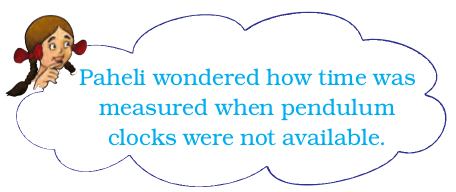
13.4 Measuring Speed
Having learnt how to measure time and distance, you can calculate the speed of an object. Let us find the speed of a ball moving along the ground.
Activity 13.3
Draw a straight line on the ground with chalk powder or lime and ask one of your friends to stand 1 to 2 m away from it. Let your friend gently roll a ball along the ground in a direction perpendicular to the line. Note the time at the moment the ball crosses the line and also when it comes to rest (Fig. 13.6). How much time does the ball take to come to rest?
The smallest time interval that can be measured with commonly available clocks and watches is one second. However, now special clocks are available that can measure time intervals smaller than a second. Some of these clocks can measure time intervals as small as one millionth or even one billionth of a second. You might have heard the terms like microsecond and nanosecond. One microsecond is one millionth of a second. A nanosecond is one billionth of a second. Clocks that measure such small time intervals are used for scientific research. The time measuring devices used in sports can measure time intervals that are one tenth or one hundredth of a second. On the other hand, times of historical events are stated in terms of centuries or millenniums. The ages of stars and planet are often expressed in billions of years. Can you imagine the range of time intervals that we have to deal with? |

(a) Sundial at Jantar Mantar, Delhi
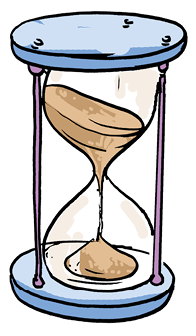
(b) Sand clock

(c) Water clock
Fig. 13.5 Some ancient time-measuring devices
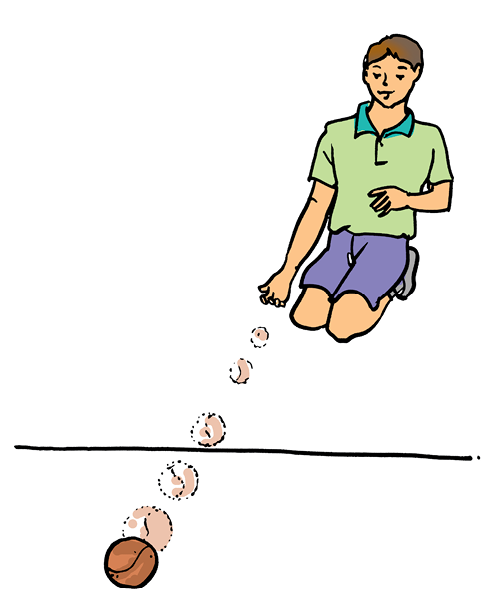
Fig. 13.6 Measuring the speed of a ball

Distance covered = Speed × Time
You can also find the time an object would take to cover a distance while moving with a given speed.
Time taken = distance/speed

You might have seen a meter fitted on top of a scooter or a motorcycle. Similarly, meters can be seen on the dashboards of cars, buses and other vehicles. Fig. 13.7 shows the dashboard of a car. Note that one of the meters has km/h written at one corner. This is called a speedometer. It records the speed directly in km/h. There is also another meter that measures the distance moved by the vehicle. This meter is known as an odometer.
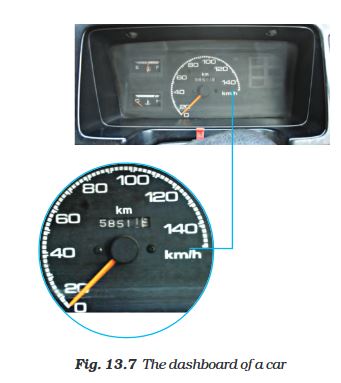
While going for a school picnic, Paheli decided to note the reading on the odometer of the bus after every 30 minutes till the end of the journey. Later on she recorded her readings in Table 13.5.
Can you tell how far was the picnic spot from the school? Can you calculate the speed of the bus? Looking at the Table, Boojho asked Paheli whether she can tell how far they would have travelled till 9:45 AM. Paheli had no answer to this question. They went to their teacher. She told them that one way to solve this problem is to plot a distance-time graph. Let us find out how such a graph is plotted.
13.5 Distance-time Graph
You might have seen that newspapers, magazines, etc., present information in various forms of graphs to make it interesting. The type of graph shown in Fig. 13.8 is known as a bar graph. Another type of graphical representation is a pie chart (Fig. 13.9). The graph shown in Fig. 13.10 is an example of a line graph. The distance-time graph is a line graph. Let us learn to make such a graph.

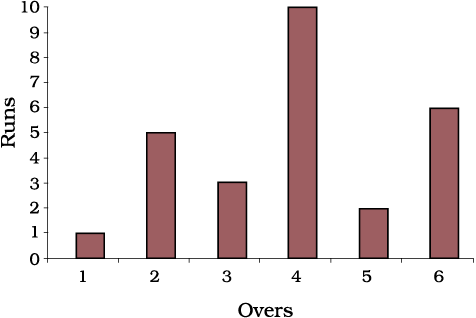
Fig. 13.8 A bar graph showing runs scored by a team in each over
Take a sheet of graph paper. Draw two lines perpendicular to each other on it, as shown in Fig. 13.11. Mark the horizontal line as XOX'. It is known as the x-axis. Similarly mark the vertical line YOY'. It is called the y-axis. The point of intersection of XOX' and YOY' is known as the origin O. The two quantities between which the graph is drawn are shown along these two axes. We show the positive values on the x-axis along OX. Similarly, positive values on the y-axis are shown along OY. In this chapter we shall consider only the positive values of quantities.
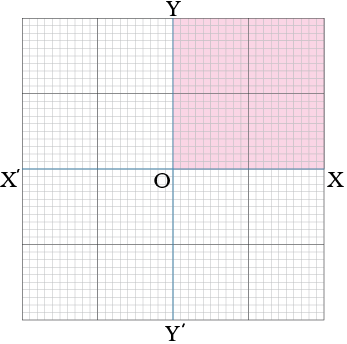
Fig. 13.11 x-axis and y-axis on a graph paper
Therefore, we shall use only the shaded part of the graph shown in Fig. 13.11.
Boojho and Paheli found out the distance travelled by a car and the time taken by it to cover that distance. Their data is shown in Table 13.6.
| S.No. | Time (min.) | Distance (km) |
| 1. | 0 | 0 |
| 2. | 1 | 1 |
| 3. | 2 | 2 |
| 4. | 3 | 3 |
| 5. | 4 | 4 |
| 6. | 5 | 5 |
You can make the graph by following the steps given below:
- Draw two perpendicular lines to represent the two axes and mark them as OX and OY as in Fig. 13.11.
- Decide the quantity to be shown along the x-axis and that to be shown along the y-axis. In this case we show the time along the x-axis and the distance along the y-axis.
- Choose a scale to represent the distance and another to represent the time on the graph. For the motion of the car scales could be
Time: 1 min = 1 cm
Distance: 1 km = 1 cm - Mark values for the time and the distance on the respective axes according to the scale you have chosen. For the motion of the car mark the time 1 min, 2 min, … on the x-axis from the origin O. Similarly, mark the distance 1 km, 2 km … on the y-axis (Fig. 13.12).
- Now you have to mark the points on the graph paper to represent each set of values for distance and time. Observation recorded at S. No. 1 in Table 13.6 shows that at time 0 min the distance moved is also zero. The point corresponding to this set of values on the graph will therefore be the origin itself. After 1 minute, the car has moved a distance of 1 km. To mark this set of values look for the point that represents 1 minute on the x-axis. Draw a line parallel to the y-axis at this point. Then draw a line parallel to the x-axis from the point corresponding to distance 1 km on the y-axis. The point where these two lines intersect represents this set of values on the graph (Fig. 13.12). Similarly, mark on the graph paper the points corresponding to different sets of values.
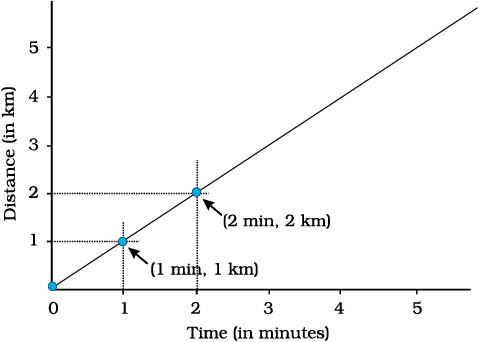
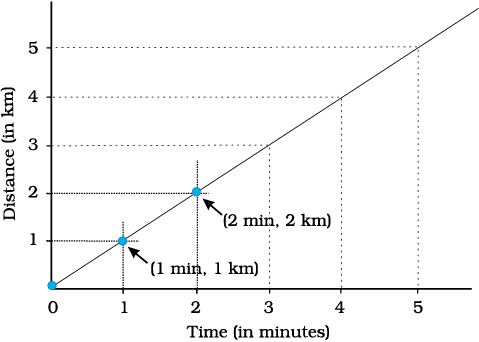
- Fig. 13.12 shows the set of points on the graph corresponding to positions of the car at various times.
- Join all the points on the graph as shown in Fig. 13.13. It is a straight line. This is the distance-time graph for the motion of the car.
- If the distance-time graph is a straight line, it indicates that the object is moving with a constant speed. However, if the speed of the object keeps changing, the graph can be of any other shape.
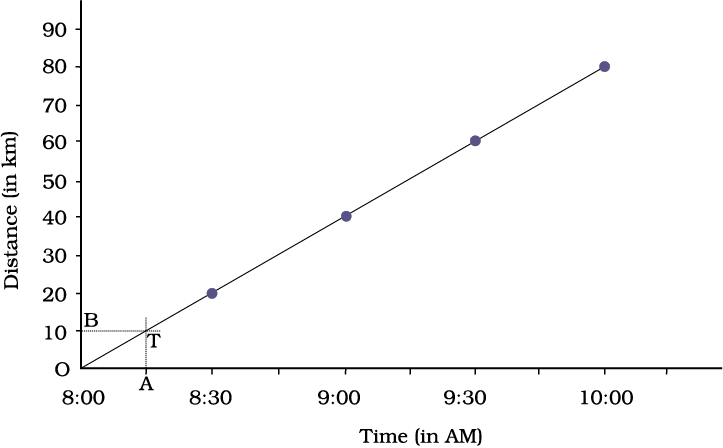
Fig.13.13 Making a graph
Generally, the choice of scales is not as simple as in the example given in Fig. 13.12 and 13.13. We may have to choose two different scales to represent the desired quantities on the x-axis and the y-axis. Let us try to understand this process with an example.
Let us again consider the motion of the bus that took Paheli and her friends to the picnic. The distance covered and time taken by the bus are shown in Table 13.5. The total distance covered by the bus is 80 km. If we decide to choose a scale 1 km = 1 cm, we shall have to draw an axis of length 80 cm. This is not possible on a sheet of paper. On the other hand, a scale 10 km = 1 cm would require an axis of length only 8 cm. This scale is quite convenient. However, the graph may cover only a small part of the graph paper. Some of the points to be kept in mind while choosing the most suitable scale for drawing a graph are:
- the difference between the highest and the lowest values of each quantity.
- the intermediate values of each quantity, so that with the scale chosen it is convenient to mark the values on the graph, and
- to utilise the maximum part of the paper on which the graph is to be drawn.
Suppose that you are given a graph paper of size 25 cm × 25 cm. One of the scales which meets the above conditions and can accommodate the data of Table 13.5 could be
Distance: 5 km = 1 cm, and
Time: 6 min = 1 cm
Can you now draw the distance-time graph for the motion of the bus? Is the graph drawn by you similar to that shown in Fig. 13.13?
Distance-time graphs provide a variety of information about the motion when compared to the data presented by a table. For example, Table 13.5 gives information about the distance moved by the bus only at some definite time intervals. On the other hand, from the distance-time graph we can find the distance moved by the bus at any instant of time. Suppose we want to know how much distance the bus had travelled at 8:15 AM. We mark the point corresponding to the time (8:15 AM) on the x-axis (Fig. 13.14). Suppose this point is A. Next we draw a line perpendicular to the x-axis (or parallel to the y-axis) at point A. We then mark the point, T, on the graph at which this perpendicular line intersects it (Fig. 13.14). Next, we draw a line through the point T parallel to the x-axis. This intersects the y-axis at the point B. The distance corresponding to the point B on the y-axis, OB, gives us the distance in km covered by the bus at 8:15 AM. How much is this distance in km? Can you now help Paheli to find the distance moved by the bus at 9:45 AM? Can you also find the speed of the bus from its distance-time graph?
| Keywords | ||
| Bar graph | Oscillation | Time period |
| Graphs | Simple pendulum | Uniform motion |
| Non-uniform motion | Speed | Unit of time |
| What you have learnt |
|
Exercises
1. Classify the following as motion along a straight line, circular or
oscillatory motion:
(i) Motion of your hands while running.
(ii) Motion of a horse pulling a cart on a straight road.
(iii) Motion of a child in a merry-go-round.
(iv) Motion of a child on a see-saw.
(v) Motion of the hammer of an electric bell.
(vi) Motion of a train on a straight bridge.
2. Which of the following are not correct?
(i) The basic unit of time is second.
(ii) Every object moves with a constant speed.
(iii) Distances between two cities are measured in kilometres.
(iv) The time period of a given pendulum is constant.
(v) The speed of a train is expressed in m/h.
3. A simple pendulum takes 32 s to complete 20 oscillations. What is the time period of the pendulum?
4. The distance between two stations is 240 km. A train takes 4 hours to cover this distance. Calculate the speed of the train.
5. The odometer of a car reads 57321.0 km when the clock shows the time 08:30 AM. What is the distance moved by the car, if at 08:50 AM, the odometer reading has changed to 57336.0 km? Calculate the speed of the car in km/min during this time. Express the speed in km/h also.
6. Salma takes 15 minutes from her house to reach her school on a bicycle. If the bicycle has a speed of 2 m/s, calculate the distance between her house and the school.
7. Show the shape of the distance-time graph for the motion in the following cases:
(i) A car moving with a constant speed.
(ii) A car parked on a side road.
8. Which of the following relations is correct?
(i) Speed = Distance × Time (ii) Speed =  (iii) Speed =
(iii) Speed =  (iv) Speed =
(iv) Speed = 
9. The basic unit of speed is:
(i) km/min (ii) m/min
(iii) km/h (iv) m/s
10. A car moves with a speed of 40 km/h for 15 minutes and then with a speed of 60 km/h for the next 15 minutes. The total distance covered by the car is:
(i) 100 km (ii) 25 km
(iii) 15 km (iv) 10 km
11. Suppose the two photographs, shown in Fig. 13.1 and Fig. 13.2, had been taken at an interval of 10 seconds. If a distance of 100 metres is shown by 1 cm in these photographs, calculate the speed of the fastest car.
12. Fig. 13.15 shows the distance-time graph for the motion of two vehicles A and B. Which one of them is moving faster?

Fig. 13.15 Distance-time graph for the motion of two cars
13. Which of the following distance-time graphs shows a truck moving with speed which is not constant?
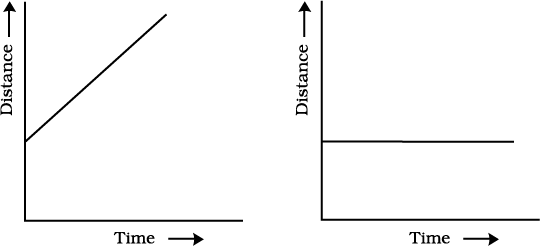
(i) (ii)
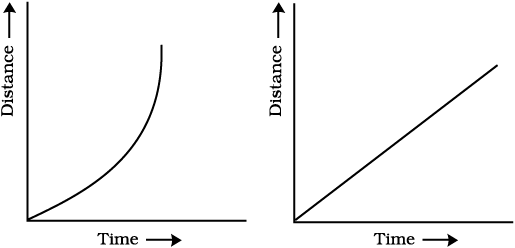
(iii) (iv)
Extend learning — Activities and Projects
1. You can make your own sundial and use it to mark the time of the day at your place. First of all find the latitude of your city with the help of an atlas. Cut out a triangular piece of a cardboard such that its one angle is equal to the latitude of your place and the angle opposite to it is a right angle. Fix this piece, called gnomon, vertically along a diameter of a circular board a shown in Fig. 13.16. One way to fix the gnomon could be to make a groove along a diameter on the circular board.
Next, select an open space, which receives sunlight for most of the day. Mark a line on the ground along the North-South direction. Place the sundial in the sun as shown in Fig. 13.16. Mark the position of the tip of the shadow of the gnomon on the circular board as early in the day as possible, say 8:00 AM. Mark the position of the tip of the shadow every hour throughout the day. Draw lines to connect each point marked by you with the centre of the base of the gnomon as shown in Fig. 13.16. Extend the lines on the circular board up to its periphery. You can use this sundial to read the time of the day at your place. Remember that the gnomon should always be placed in the North-South direction as shown in Fig. 13.16.
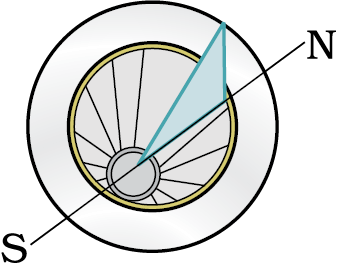
Fig. 13.16
2. Collect information about time-measuring devices that were used in the ancient times in different parts of the world. Prepare a brief write up on each one of them. The write up may include the name of the device, the place of its origin, the period when it was used, the unit in which the time was measured by it and a drawing or a photograph of the device, if available.
3. Make a model of a sand clock which can measure a time interval of 2 minutes (Fig. 13.17).
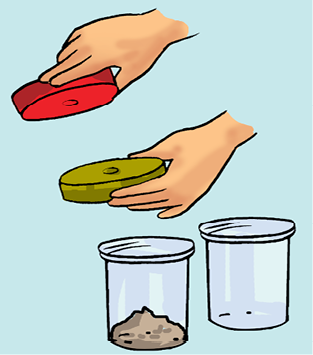

Fig. 13.17
4. You can perform an interesting activity when you visit a park to ride a swing. You will require a watch. Make the swing oscillate without anyone sitting on it. Find its time period in the same way as you did for the pendulum. Make sure that there are no jerks in the motion of the swing. Ask one of your friends to sit on the swing. Push it once and let it swing naturally. Again measure its time period. Repeat the activity with different persons sitting on the swing. Compare the time period of the swing measured in different cases. What conclusions do you draw from this activity?
| Did you know? |
The time-keeping services in India are provided by the National Physical Laboratory, New Delhi. The clock they use can measure time intervals with an accuracy of one-millionth of a second. The most accurate clock in the world has been developed by the National Institute of Standards and Technology in the U.S.A. This clock will lose or gain one second after running for 20 million years. |

